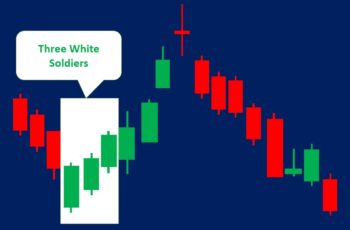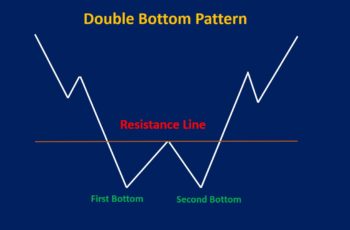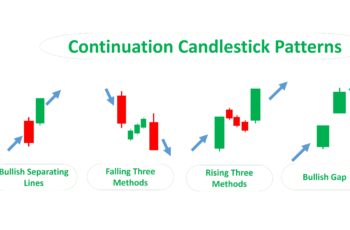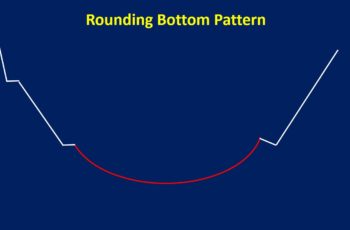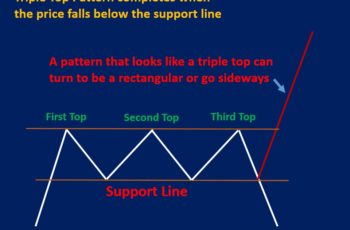Upside-gap two crows candlestick pattern is a reversal structure that contains three candles. It is a bearish candlestick pattern.
The upside-gap two crows pattern starts with a green candle, followed by a gap, and two red candles, in which the second candle opens above the opening price of the second candle. It means that even if there is a gap-up, two days consecutively fail to close above its opening price. These failures are worrying for bulls and a good signal for bears.
This pattern does not occur frequently and is not very reliable. Thus, trading it requires caution.
How to Trade Upside-Gap Two Crows Candlestick pattern?
Since a gap-up is involved and this pattern is bearish, strong, and more signals are required.
Some of the factors that you should consider before trading it are the followings:
- An uptrend should precede it.
- A gap-up is a bullish pattern. So, due to the gap, a safe approach to trading upside-gap two crows is to wait until another candle fills it. This candle can be the last candle of this pattern or another one.
- Blend the upside-gap two crows with other technical analysis techniques because more signals are better.
- Check the economic calendar for macro data and combine it with fundamental analysis.
- If you are convinced, place your trade. And put the stop loss at the top of the last candle.
It is worth mentioning again that this pattern occurs less often and is less reliable. Take care of your money.
Examples of Upside-Gap Two Crows Candlestick Pattern
In the following, I have posted three examples to make it more clear.
Example #1
The eBay stock finished an Upside-Gap Two crows candlestick pattern on 27 April 1999.
Here is the chart.
The above upside-gap two crows predicted a downside successfully due to multiple reasons:
- The gap was not very huge. It is an indication of less power behind the uptrend.
- The RSI Indicator at the bottom started converging in early March. It says that the current uptrend can not be trusted too much.
- The third candle itself is a bearish belt hold candlestick pattern.
The best selling time was the closing price of the next candle after the belt hold pattern. You may ask why not after the completion of the pattern. The reason is that this pattern is less reliable and you need to confirm it.
Example #2
The eBay stock completed an upside-gap two crows on 15 July 2003. It is complicated.
The above pattern predicted a downside. It was right only for the next three days.
This pattern occurred when the RSI was showing an overbought position. Moreover, two sessions earlier another candle also had tried to go up but failed.
Two sessions after the pattern, the candle started after a gap-down, a bearish continuation pattern. However, a support area created by a gap-up in early July was a bad signal that hampered going down.
In situations like the above, close your position if a gap was created that did not support your trade. As you see, the seventh candle could hit the stop loss of those who had sold if they had not closed after a bullish gap-up.
Example #3
On 09 June 2017, the Alibaba chart made an upside-gap two crows. It did not work.
This pattern occurred after a long uptrend, and the RSI indicator was showing an oversold condition, with two supporting signals.
Meanwhile, as mentioned earlier, the gap was not filled. In my personal opinion, there should never be placed a trade against the direction of a gap, unless it is filled.
Bottom Line
Trading a gap-up two crows carry a high risk. Unless the gap generated in the middle of the pattern is filled, never short.


